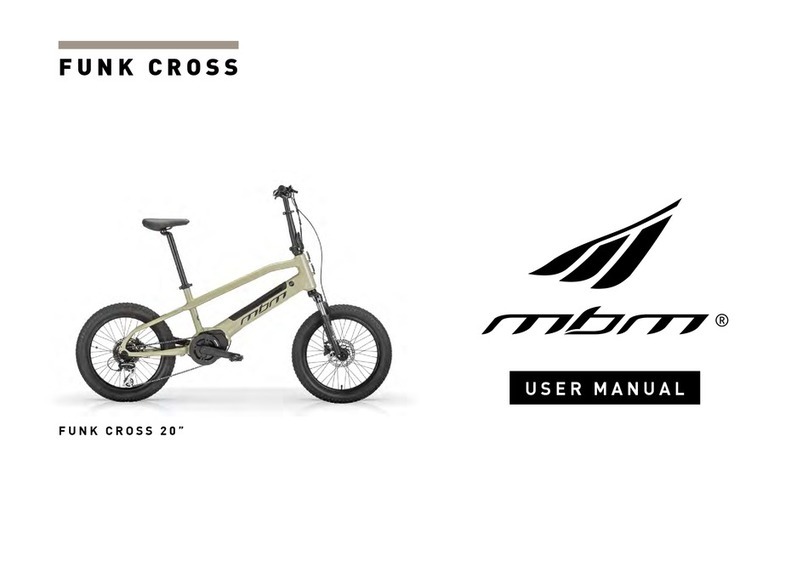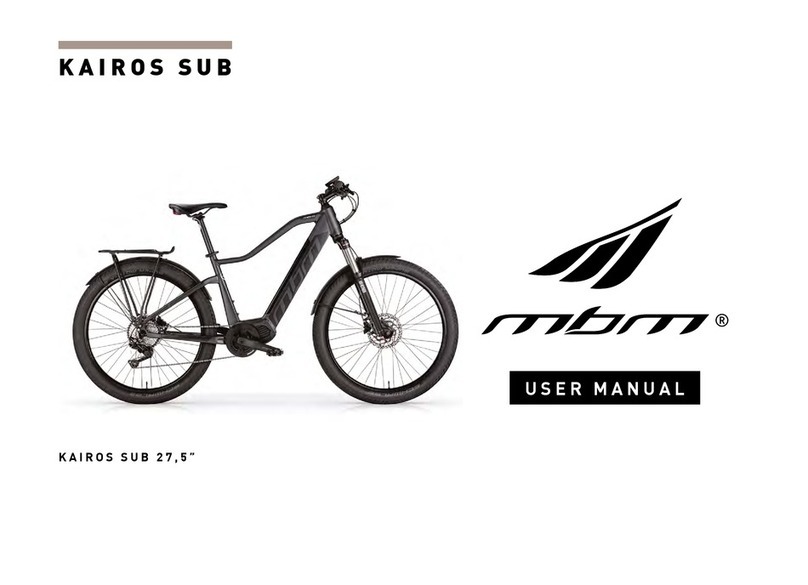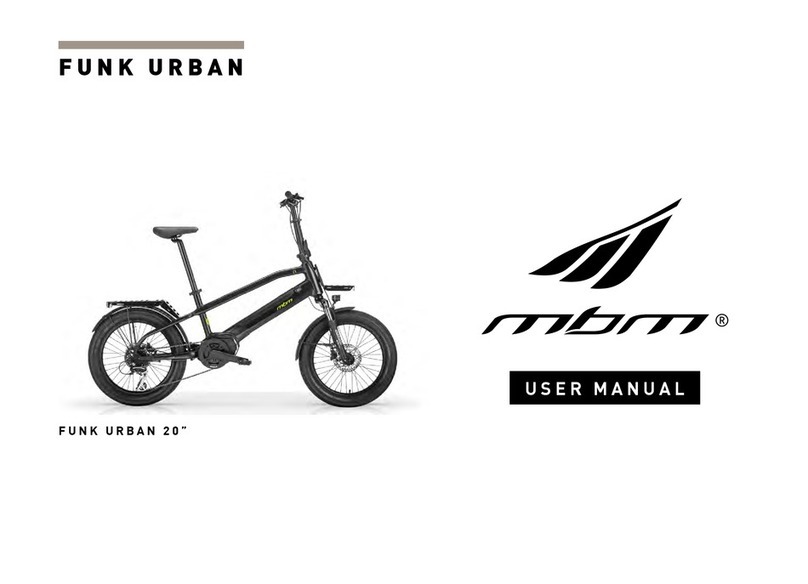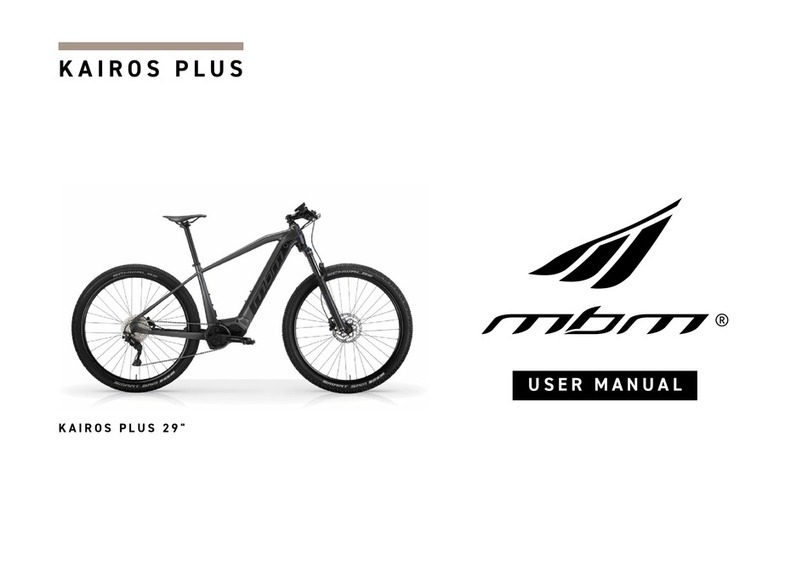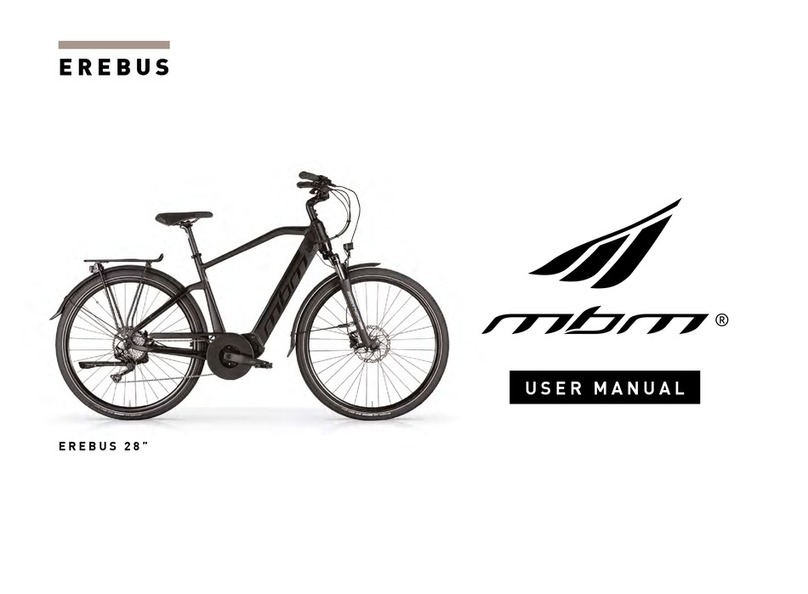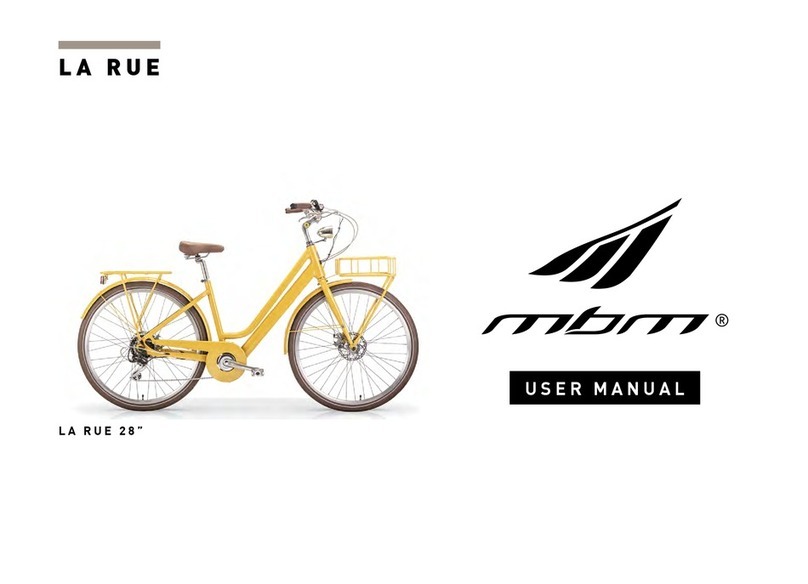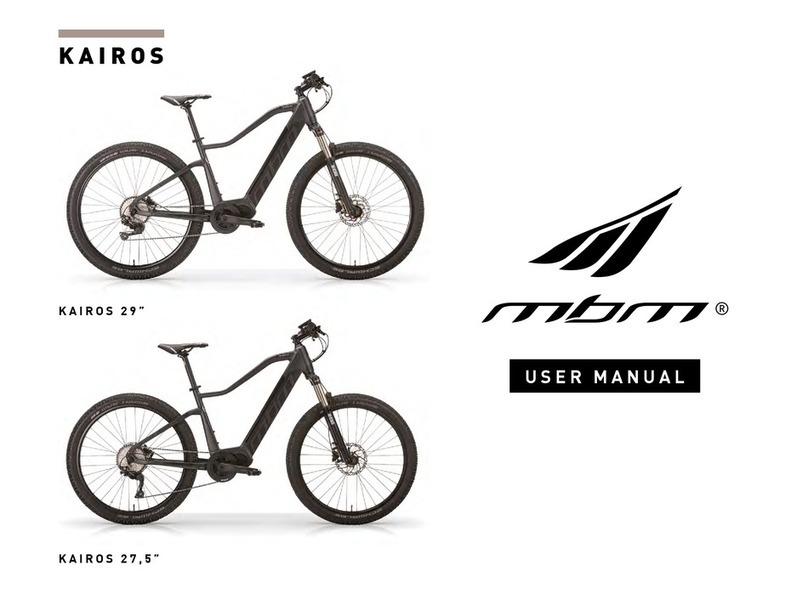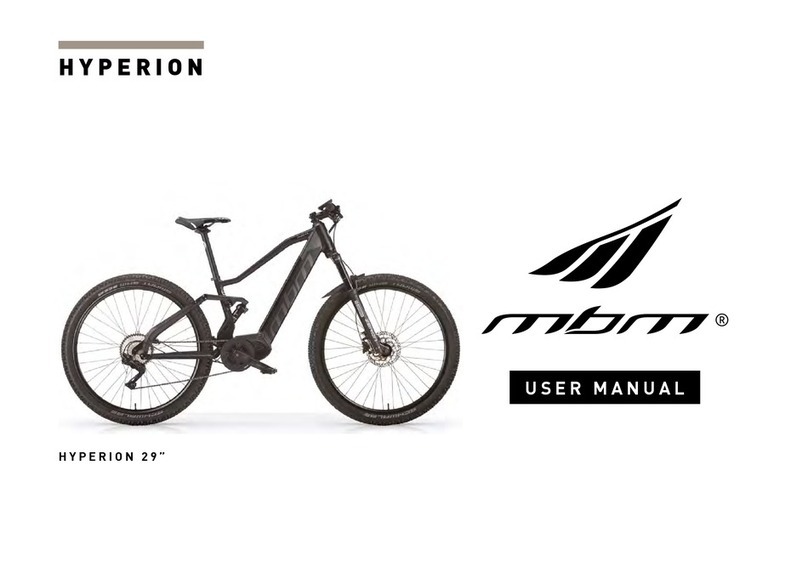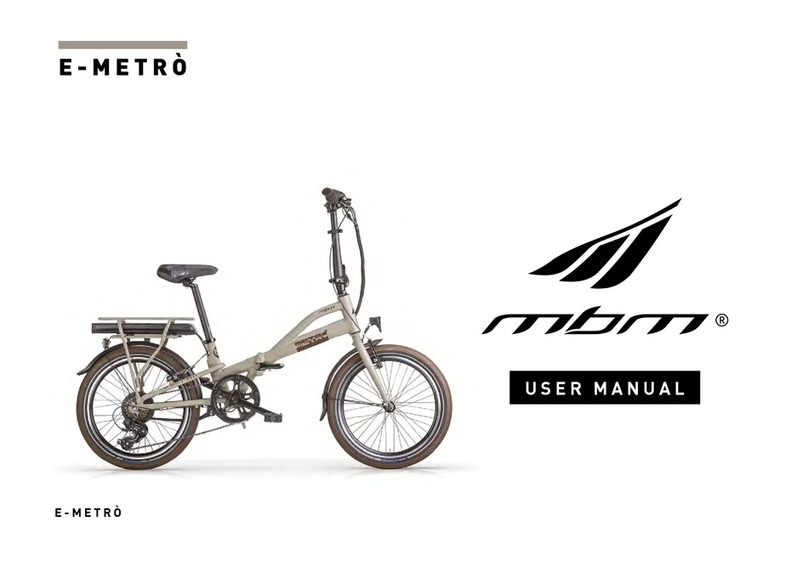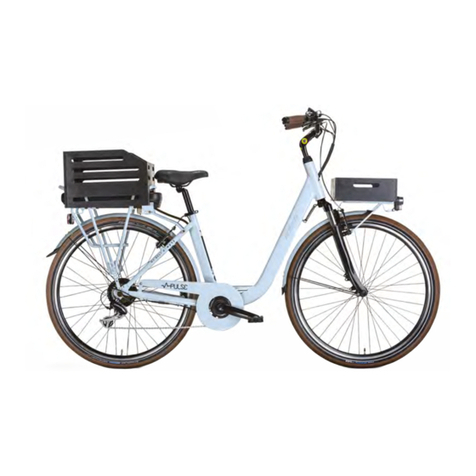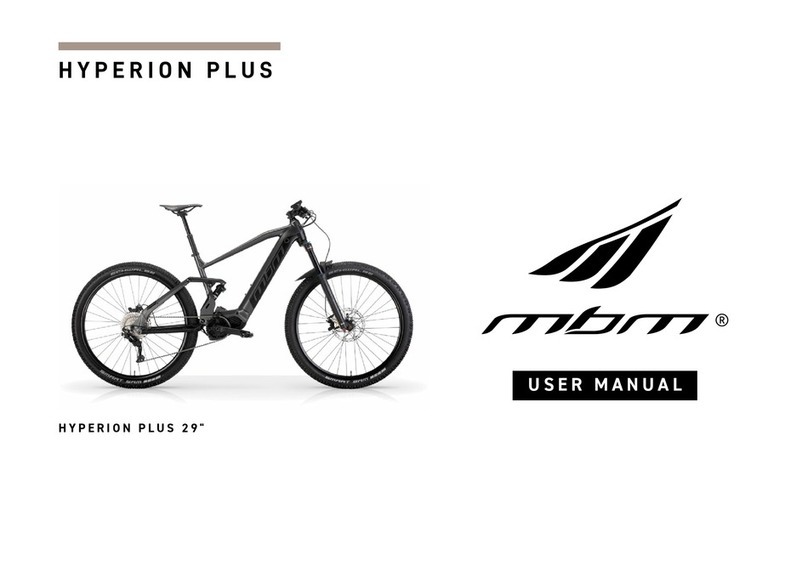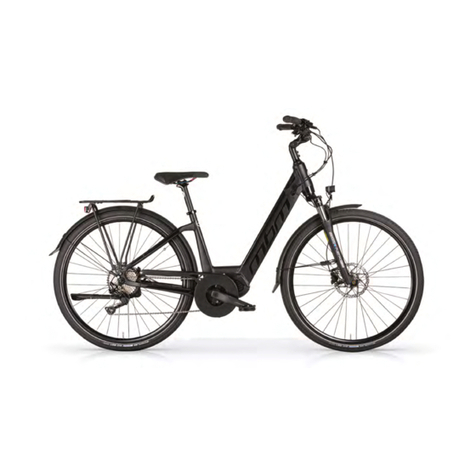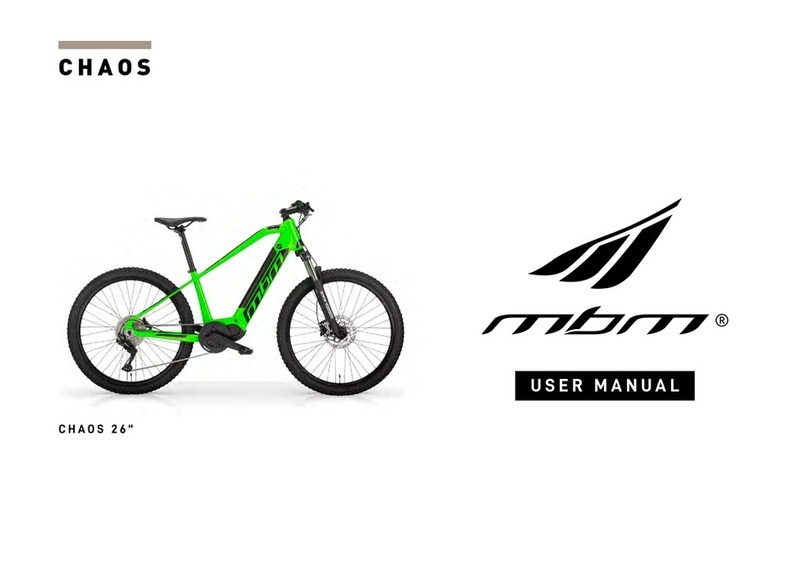
KERES PLUS USER MANUAL
p.5
For any data that is not included or cannot be deduced from this manual, it is recommended to consult the authorized dealer directly.
2.2 Warnings for users
1. It is forbidden to carry a passenger.
2. Only to be used by experienced adults and children.
3. Do not take alcohol or drugs before riding the pedal assisted bicycle.
4. These pedal assisted bicycle models are designed and built to be used outdoors, on roads and in private and public environments.
5. Do not ask the pedal assisted bicycle to perform in excess of what it was designed for.
6. Never ride the pedal assisted bicycle with parts removed.
7. Ride with both hands on the handlebars.
8. Replace worn and/or damaged parts and check that the guards work properly before use.
2.3 Warnings for the maintenance
1. All maintenance operations must be carried out with the battery disconnected.
2. During each maintenance phase, the operators must be equipped with the necessary accident prevention equipment.
3. The tools used for maintenance must be suitable and of good quality.
4. Do not use gasoline or flammable solvents as cleaners, always use non-flammable and non-toxic solvents.
5. Limit the use of compressed air for cleaning as much as possible (max 2 bar) and protect yourself with goggles with side guards.
6. Never resort to the use of open flames as a means of lighting when carrying out checks or maintenance operations.
7. After each maintenance or adjustment operation, make sure that no tools or foreign bodies remain between the moving parts of the
pedal assisted bicycle.
ATTENTION
ATTENTION
UNAUTHORIZED MODIFICATIONS
If you hear unusual noises, or feel something strange, stop the pedal assisted bicycle immediately. Then carry out a
check and, if necessary, contact your authorized dealer.
ORIGINAL REPLACEMENTS
Only use original spare parts supplied by M.B.M. S.r.l.
Single-member.
The Manufacturer is excluded from any liability for
damage or loss of functionality caused by the use of
non-original accessories and parts.
DANGER:
It is strictly forbidden, therefore, to modify or remove the
guards, controls, labels and indication plates.
DANGER
